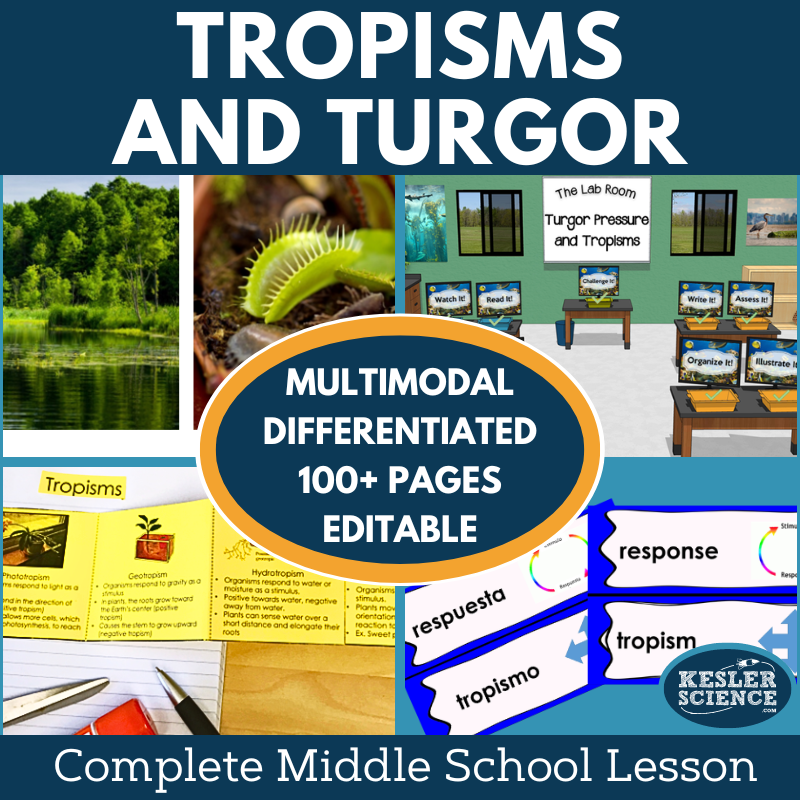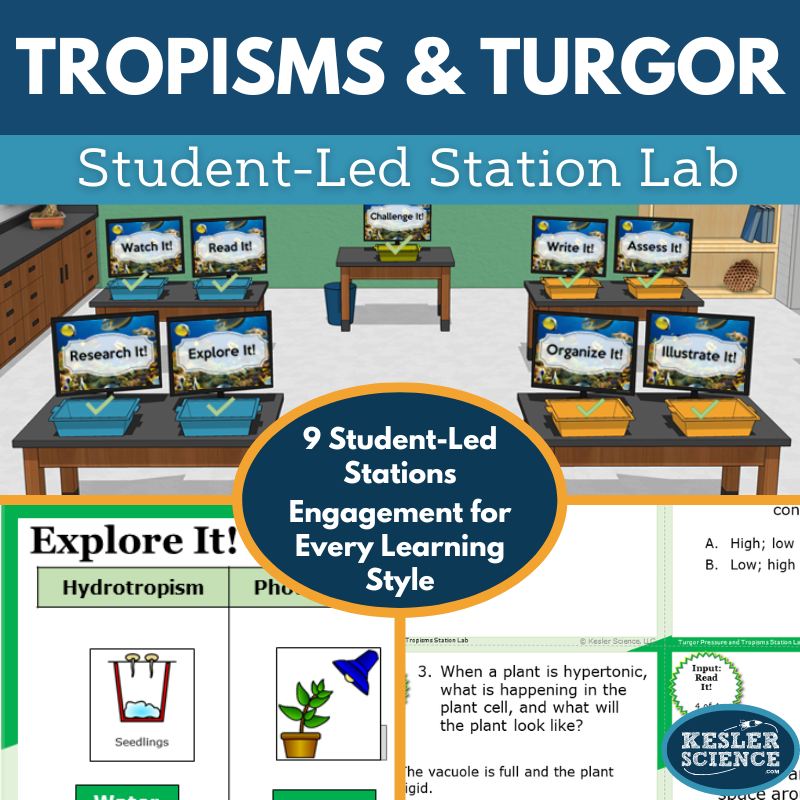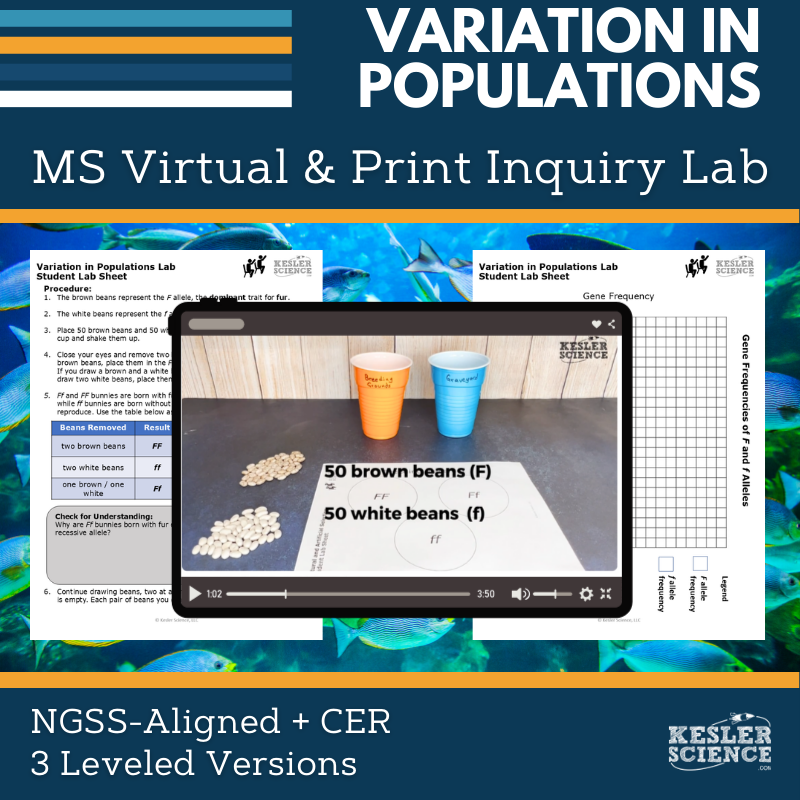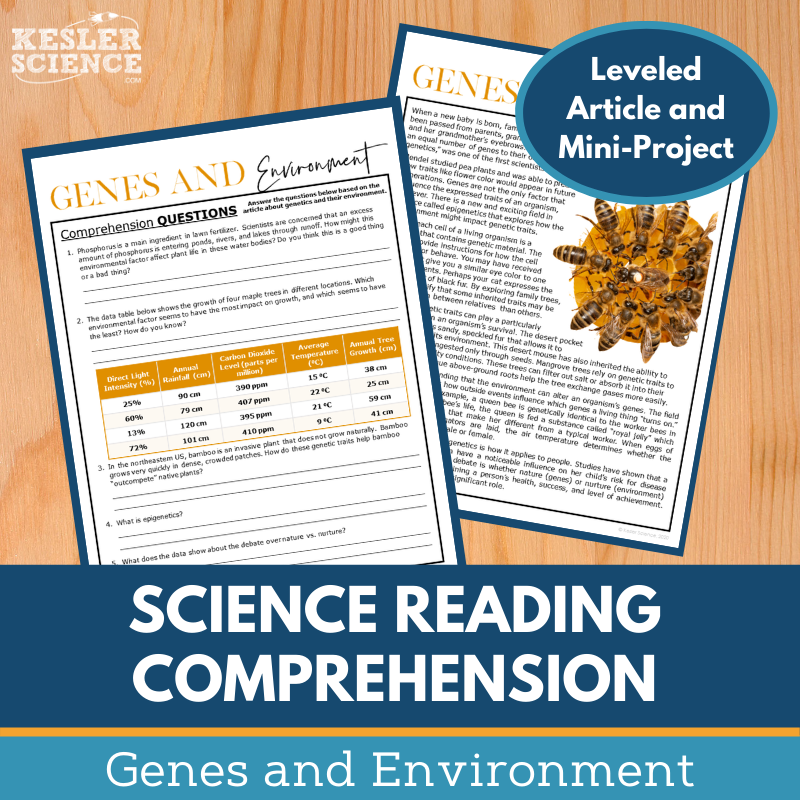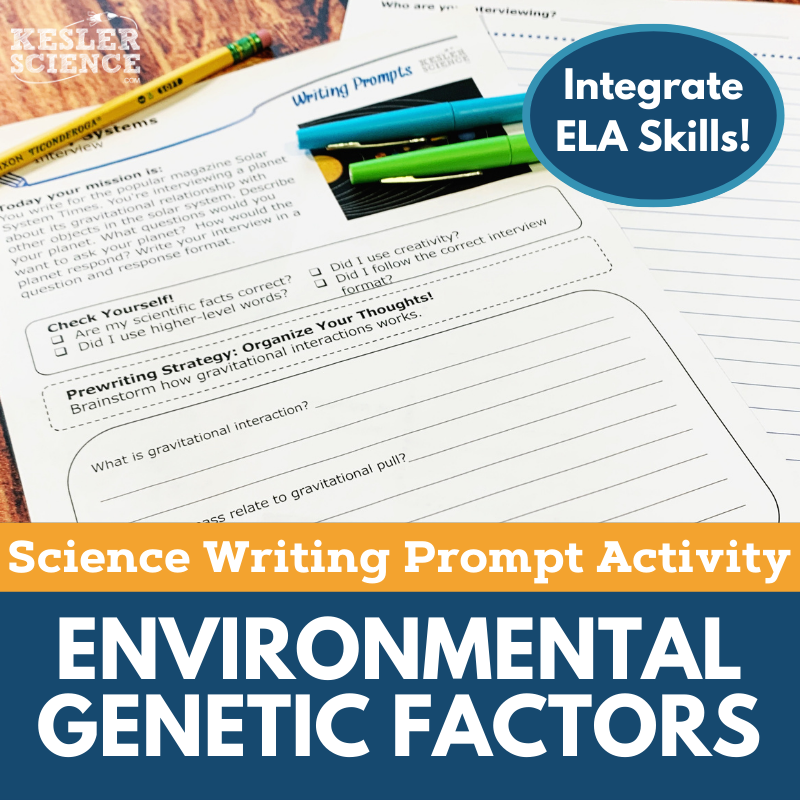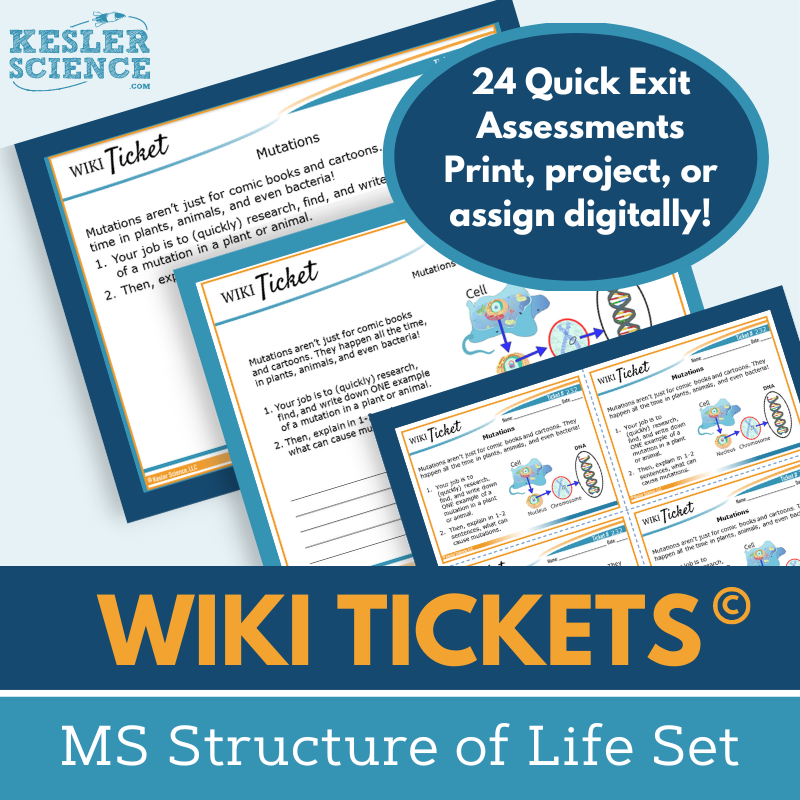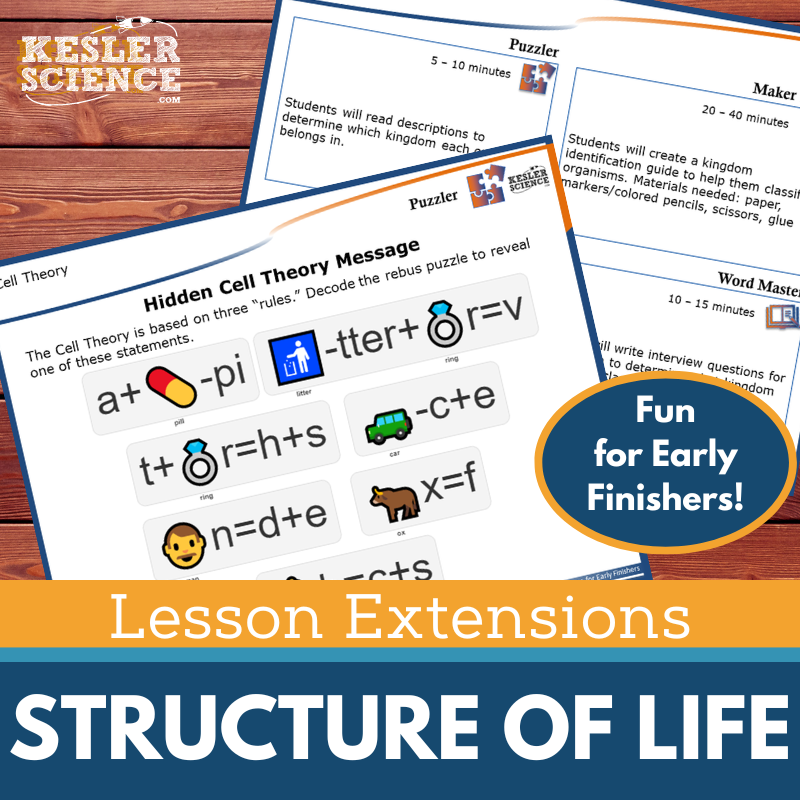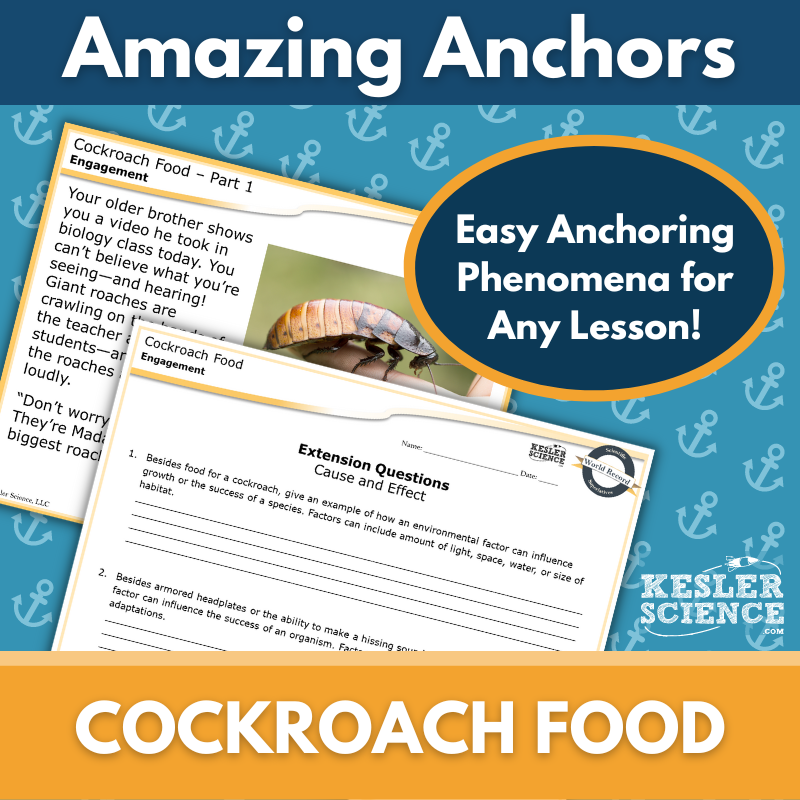Influencing Organism Growth Activities for Middle School Science
This engaging 5E lesson introduces middle school students to plant responses to stimuli, different types of tropisms, and the effects of turgor pressure. The resources below will give students a comprehensive understanding of organism growth. All of the following materials are also included in the Kesler Science Membership.
The Kesler Science Types of Tropisms and Turgor Pressure 5E Lesson is a comprehensive, student-led unit designed for middle school. It includes editable presentations, worksheets, choice projects, and assessments, requiring minimal prep while supporting differentiated learning. The lesson follows the 5E Model, covering Engagement, Exploration, Explanation, Elaboration, and Evaluation, with materials available in both English and Spanish.
Students explore how plants respond to stimuli, the different types of tropisms, and the effects of turgor pressure through multimodal learning. The engagement phase includes vocabulary word wall cards and discussion activities. The exploration phase features a differentiated, student-led station lab with hands-on activities, reading passages, research tasks, videos, and interactive exercises. Explanation includes editable PowerPoints, interactive notebooks, and note-taking templates. Elaboration offers student-choice projects to extend learning, while evaluation includes STAAR 2.0-aligned assessments, review worksheets, and discussion questions.
The resource is fully adaptable for virtual and in-person learning, with printable and digital formats. Spanish translations are available for key materials, ensuring accessibility for diverse learners.
The Kesler Science Types of Tropisms and Turgor Pressure 5E Lesson is a comprehensive, student-led unit designed for middle school. It includes editable presentations, worksheets, choice projects, and assessments, requiring minimal prep while supporting differentiated learning. The lesson follows the 5E Model, covering Engagement, Exploration, Explanation, Elaboration, and Evaluation, with materials available in both English and Spanish.
Students explore how plants respond to stimuli, the different types of tropisms, and the effects of turgor pressure through multimodal learning. The engagement phase includes vocabulary word wall cards and discussion activities. The exploration phase features a differentiated, student-led station lab with hands-on activities, reading passages, research tasks, videos, and interactive exercises. Explanation includes editable PowerPoints, interactive notebooks, and note-taking templates. Elaboration offers student-choice projects to extend learning, while evaluation includes STAAR 2.0-aligned assessments, review worksheets, and discussion questions.
The resource is fully adaptable for virtual and in-person learning, with printable and digital formats. Spanish translations are available for key materials, ensuring accessibility for diverse learners.
Engage your middle school students with this student-led station lab exploring turgor pressure and tropisms. Designed for in-class or virtual learning, this interactive lesson guides students through differentiated activities that promote independent learning and critical thinking.
Students will identify and compare turgor pressure and tropisms through nine modular stations, each offering multimodal experiences. Input stations include hands-on demonstrations, research-based tasks, reading passages in English and Spanish, and video analysis. Output stations allow students to demonstrate their understanding through organizing information, creating illustrations, writing responses, and completing assessments. A bonus challenge station provides extension activities such as crosswords, games, and mini projects for early finishers.
This low-prep, high-engagement resource fosters student-centered learning while allowing teachers to facilitate rather than direct instruction.
Engage your middle school students with this student-led station lab exploring turgor pressure and tropisms. Designed for in-class or virtual learning, this interactive lesson guides students through differentiated activities that promote independent learning and critical thinking.
Students will identify and compare turgor pressure and tropisms through nine modular stations, each offering multimodal experiences. Input stations include hands-on demonstrations, research-based tasks, reading passages in English and Spanish, and video analysis. Output stations allow students to demonstrate their understanding through organizing information, creating illustrations, writing responses, and completing assessments. A bonus challenge station provides extension activities such as crosswords, games, and mini projects for early finishers.
This low-prep, high-engagement resource fosters student-centered learning while allowing teachers to facilitate rather than direct instruction.
The Tropisms and Turgor Pressure Student Choice Projects allow middle school students to demonstrate their understanding through a project that suits their preferred output style. A project page outlines six student-led options plus a “design your own” project, all with an editable rubric for teacher, peer, or self-assessment.
These flexible and multimodal projects provide creative ways for students to engage with the content. Two versions of the project page support differentiation, with modified options for students needing remediation and challenge options for advanced learners. Teachers can adjust the rubric to fit their grading needs.
The projects require standard classroom supplies like paper, markers, and scissors, with many options available for digital completion. Some crafting materials may be helpful for building models.
The Tropisms and Turgor Pressure Student Choice Projects allow middle school students to demonstrate their understanding through a project that suits their preferred output style. A project page outlines six student-led options plus a “design your own” project, all with an editable rubric for teacher, peer, or self-assessment.
These flexible and multimodal projects provide creative ways for students to engage with the content. Two versions of the project page support differentiation, with modified options for students needing remediation and challenge options for advanced learners. Teachers can adjust the rubric to fit their grading needs.
The projects require standard classroom supplies like paper, markers, and scissors, with many options available for digital completion. Some crafting materials may be helpful for building models.
The Natural Selection Inquiry Lab aligns with NGSS standards MS-LS1-5 and MS-LS4-6, guiding students to model natural selection using a population of bunnies with fur variation. Through this simulation, students explore how genetic traits change over time due to environmental influences and selective pressures.
This lab offers both hands-on and digital formats, each including comprehension questions, Claim-Evidence-Reasoning (C.E.R.) prompts, and reflection activities. The print version involves an in-person experiment with simple materials like dry beans and plastic cups, while the digital version features an interactive PowerPoint, Google Slides compatibility, and a recorded lab demonstration for flexible learning.
To support differentiation, the lab includes three levels: Dependent (guided inquiry with procedural instructions), Modified (structured with sentence stems and multiple-choice options), and Independent (student-led with minimal guidance). Editable teacher resources, answer keys, and multimodal learning options ensure accessibility for all students.
The Natural Selection Inquiry Lab aligns with NGSS standards MS-LS1-5 and MS-LS4-6, guiding students to model natural selection using a population of bunnies with fur variation. Through this simulation, students explore how genetic traits change over time due to environmental influences and selective pressures.
This lab offers both hands-on and digital formats, each including comprehension questions, Claim-Evidence-Reasoning (C.E.R.) prompts, and reflection activities. The print version involves an in-person experiment with simple materials like dry beans and plastic cups, while the digital version features an interactive PowerPoint, Google Slides compatibility, and a recorded lab demonstration for flexible learning.
To support differentiation, the lab includes three levels: Dependent (guided inquiry with procedural instructions), Modified (structured with sentence stems and multiple-choice options), and Independent (student-led with minimal guidance). Editable teacher resources, answer keys, and multimodal learning options ensure accessibility for all students.
This Science Reading Comprehension Passage explores how environmental and genetic factors influence the growth of organisms. Middle school students read a nonfiction article about genes and the environment, answer comprehension questions, and design a garden suited to their local environment.
The resource includes a leveled science passage (Lexile 1100-1300), five to seven comprehension questions, a hands-on mini-project, and a Cornell notes template. It features engaging, printable graphics and is adaptable for both in-person and virtual learning through platforms like Google Classroom, MS Teams, Schoology, and Canvas.
Ideal for sub plans, extra credit, ISS, or whole-class instruction, this lesson fosters critical thinking, classroom discussions, and science literacy while enhancing reading comprehension skills.
This Science Reading Comprehension Passage explores how environmental and genetic factors influence the growth of organisms. Middle school students read a nonfiction article about genes and the environment, answer comprehension questions, and design a garden suited to their local environment.
The resource includes a leveled science passage (Lexile 1100-1300), five to seven comprehension questions, a hands-on mini-project, and a Cornell notes template. It features engaging, printable graphics and is adaptable for both in-person and virtual learning through platforms like Google Classroom, MS Teams, Schoology, and Canvas.
Ideal for sub plans, extra credit, ISS, or whole-class instruction, this lesson fosters critical thinking, classroom discussions, and science literacy while enhancing reading comprehension skills.
The Environmental Genetic Factors Science Writing Prompt Activity engages middle school students in life science through a creative commercial-based writing exercise. Aligned with MS LS1-5, this activity helps students construct scientific explanations about how environmental and genetic factors influence organism growth. Designed for both in-person and virtual learning, it fosters science reasoning and writing skills.
This resource includes teacher directions with an answer guide and rubrics, projection and print handouts, half-sheet versions for interactive notebooks, and a digital PowerPoint format compatible with Google Slides. It works well as a cross-curricular activity, pre-test assessment, student choice project, or enrichment for early finishers. Ideal for extra credit, make-up work, differentiation, or TELPAS samples, this engaging writing prompt encourages creativity and science literacy in the classroom.
The Environmental Genetic Factors Science Writing Prompt Activity engages middle school students in life science through a creative commercial-based writing exercise. Aligned with MS LS1-5, this activity helps students construct scientific explanations about how environmental and genetic factors influence organism growth. Designed for both in-person and virtual learning, it fosters science reasoning and writing skills.
This resource includes teacher directions with an answer guide and rubrics, projection and print handouts, half-sheet versions for interactive notebooks, and a digital PowerPoint format compatible with Google Slides. It works well as a cross-curricular activity, pre-test assessment, student choice project, or enrichment for early finishers. Ideal for extra credit, make-up work, differentiation, or TELPAS samples, this engaging writing prompt encourages creativity and science literacy in the classroom.
These formative assessments for 6th-8th grade science offer flexible, engaging options to check student understanding. The Structure of Life Set includes 24 WIKI Tickets© assessments, with each topic available in five formats: a full-screen display for projection, three handout sizes (full, split, and quarter-page), and an interactive digital version compatible with PPT or Google Slides.
Aligned with NGSS and TEKS standards, each topic is covered by at least one ticket, with some having multiple tickets. A table of contents file is included to show the alignment. These assessments are suitable for both in-person and virtual learning environments.
Topics covered include asexual vs. sexual reproduction, cell function and theory, heredity, mutations, homeostasis, CRISPR, and more. WIKI Tickets© can be used as exit tickets, bellringers, or any time you need to gauge student progress. They can be projected for students to answer on paper, printed in handout formats, or completed digitally in a 1:1 or remote setting.
These formative assessments for 6th-8th grade science offer flexible, engaging options to check student understanding. The Structure of Life Set includes 24 WIKI Tickets© assessments, with each topic available in five formats: a full-screen display for projection, three handout sizes (full, split, and quarter-page), and an interactive digital version compatible with PPT or Google Slides.
Aligned with NGSS and TEKS standards, each topic is covered by at least one ticket, with some having multiple tickets. A table of contents file is included to show the alignment. These assessments are suitable for both in-person and virtual learning environments.
Topics covered include asexual vs. sexual reproduction, cell function and theory, heredity, mutations, homeostasis, CRISPR, and more. WIKI Tickets© can be used as exit tickets, bellringers, or any time you need to gauge student progress. They can be projected for students to answer on paper, printed in handout formats, or completed digitally in a 1:1 or remote setting.
Lesson Extensions provide engaging activities for fast finishers, offering critical thinking and creative challenges to keep students on task. These activities help end lessons, fill downtime during testing, and reduce distractions by keeping students engaged with rigorous and enjoyable tasks.
Each Lesson Extension includes four components: Puzzler, a problem-solving activity; Maker Space, a hands-on STEAM activity; Tech Connection, a digital media option for demonstrating learning; and Word Master, which incorporates creative writing into science lessons.
Included in each Lesson Extension are teacher directions, answer keys, a projection version for digital boards, and paper versions for printouts. These extensions are ideal for pushing independent learners with puzzles, hands-on engagement, and creativity, particularly in life science topics.
The topics covered include artificial selection, body systems, cells and their parts, cell theory, genetic mutations, hereditary patterns, and many more. These extensions are aligned with NGSS and TEKS science standards, ensuring they complement and deepen students' understanding of life science.
Lesson Extensions provide engaging activities for fast finishers, offering critical thinking and creative challenges to keep students on task. These activities help end lessons, fill downtime during testing, and reduce distractions by keeping students engaged with rigorous and enjoyable tasks.
Each Lesson Extension includes four components: Puzzler, a problem-solving activity; Maker Space, a hands-on STEAM activity; Tech Connection, a digital media option for demonstrating learning; and Word Master, which incorporates creative writing into science lessons.
Included in each Lesson Extension are teacher directions, answer keys, a projection version for digital boards, and paper versions for printouts. These extensions are ideal for pushing independent learners with puzzles, hands-on engagement, and creativity, particularly in life science topics.
The topics covered include artificial selection, body systems, cells and their parts, cell theory, genetic mutations, hereditary patterns, and many more. These extensions are aligned with NGSS and TEKS science standards, ensuring they complement and deepen students' understanding of life science.
This Amazing Anchors Phenomenon Lesson introduces the growth of organisms through an engaging experiment on Madagascar hissing cockroaches. The two-part resource includes an introductory reading with comprehension and extension questions to build curiosity and an explanatory reading that breaks down the science behind organism growth, reinforcing student understanding.
Aligned with NGSS standard MS LS1-5, this no-prep resource includes teacher directions, answer keys, projection slides, and both print and digital formats for Google Classroom and other LMS platforms. A differentiated version provides sentence starters for student support. Designed to bookend a lesson, these readings serve as engaging supplements for the Engagement and Elaborate segments of a 5E lesson in any in-person or virtual classroom.
This Amazing Anchors Phenomenon Lesson introduces the growth of organisms through an engaging experiment on Madagascar hissing cockroaches. The two-part resource includes an introductory reading with comprehension and extension questions to build curiosity and an explanatory reading that breaks down the science behind organism growth, reinforcing student understanding.
Aligned with NGSS standard MS LS1-5, this no-prep resource includes teacher directions, answer keys, projection slides, and both print and digital formats for Google Classroom and other LMS platforms. A differentiated version provides sentence starters for student support. Designed to bookend a lesson, these readings serve as engaging supplements for the Engagement and Elaborate segments of a 5E lesson in any in-person or virtual classroom.
Year-Round Resources
These year-round activities will increase your students' understanding of many middle school science topics. All of these activities are also included in the Kesler Science Membership.
Visual Data & Graphing
You're not alone if your students struggle with understanding graphs, charts, and tables. It's a skill that takes an enormous amount of practice. This resource will help students build a strong foundation in analyzing data and creating their own data visualizations.
Bell Ringers and Warm-Ups
These middle school science bell ringers are an excellent way to engage your students as soon as they walk into your classroom. This comprehensive FULL YEAR resource includes everything you need to start off each science class with an interesting warm-up activity.
Review Board Games
Each game board has been carefully designed to keep students engaged. There are 10 different action spaces on each board and dozens of question cards. All of the actions are related to science concepts and keep the students motivated throughout the game.
Each game is ready to play. Simply print out the board and the cards and let the students enjoy reviewing nine different units.
Essential Questions and Standards
Below are the essential questions and standards associated with the lessons and activities included in the influencing organism growth unit. This topic is only one of more than 100 middle school science topics included in the Kesler Science Membership.
-
In what ways do plants respond to stimuli?
-
What are four different types of tropisms?
-
How does turgor pressure affect a plant?
-
NGSS - MS-LS1-5 Influencing Organism Growth
Kesler Science Membership
Imagine never having to search for another middle school science lesson again. The membership gives you access to ALL of the Kesler Science products in one place (Yes, including everything above).
Say goodbye to long hours of lesson prep.

